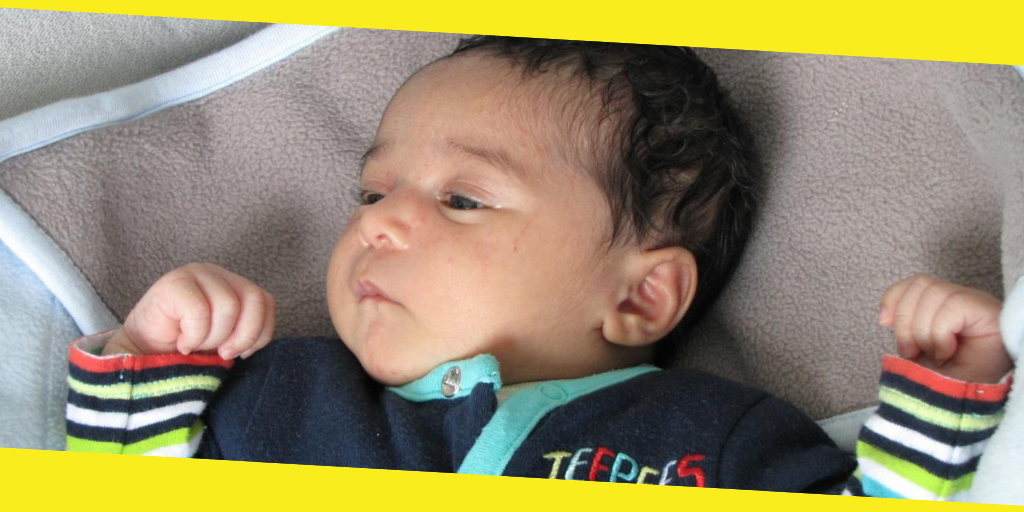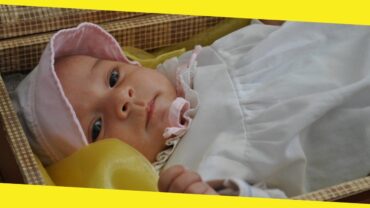What if Baby Acne Doesn’t Go Away?
This post was last updated on March 26th, 2024

Baby is said to be a natural skin issue and it is often said that it clears up automatically after few weeks.
If you are the parents of first child, then this post is for you specially. Here you will know various facts about baby acne which might be helpful for you. So keep reading till end to know more about baby acne, baby acne causes and baby acne treatment.
Baby acne is like the acne in adults in its appearance but it’s harmless and painless unlike acne in adults. What causes baby acne is still a mystery and no single reason is agreed upon by the researchers and scientists. According to research, almost 20% babies born in this world gets baby acne within two weeks of their birth. And it takes almost three to four weeks to clear acne.
If your baby is one of those twenty percent and gets baby acne on face, then don’t panic at all. It’s a common issue and believe me it’s painless and harmless acne. Good news is that it won’t leave any scar on your baby’s skin if it is left untreated. It takes its time to heal naturally and this time can be a couple of weeks or even a month. But what if baby acne doesn’t go away even after one or two months?
Check if it is Really Baby Acne?
If baby acne doesn’t go away even after one or two months, then first thing need to check is whether it is really baby acne or something else. There are chances that you have misidentified the issue and it can be other than just baby acne. Here we will read about few skin issues which may look like baby acne but are not baby acne and which must be treated well in time.
Milia
Milia is often misidentified as baby acne as it’s the skin issue which looks much similar to baby acne. Milia appears on cheeks and nose mostly and on chin as well. The timing and look is almost same that’s why parents often get confused whether it’s baby acne or milia. Milia, like baby acne appears just after few days of baby birth. The size is little different as compared to baby acne as milia are tiny bumps on skin and these can have white heads. These white heads are due to dead white cells which are stuck in the skin. Another thing that makes milia similar to baby acne is the painlessness and self-healing ability, milia also gets healed automatically with baby acne treatment.
Seborrheic Eczema
Seborrheic eczema is a type of eczema that looks much similar to baby acne and people often misidentify it. Seborrheic eczema is sometimes called cradle or crib. Other types of eczema may also look similar to baby acne and it is something that you shouldn’t ignore if it appears on your baby’s face or on any part of skin.
Eczema can be painful and irritating acne and it must be treated well in time otherwise there are chances that it may leave scars or marks on the baby’s skin even after it leaves. Consult the paediatricians if you get any doubt that the red bumps on your baby’s skin are not baby acne and is not going away even after one month.
Rash
How to identify if it’s baby acne or rash? This identification can be easier than the differentiation between baby acne and eczema or milia. Baby rash can be heat rash or as a result of some infection. Heat rash are nothing but very tiny red bumps making a specific skin area red. Heat rash can be due to some irritation or scratching due to some fabric or tight clothes.
Erythema Toxicum
Erythema toxicum is another skin issue that resembles baby eczema. It’s another natural issue and it is painless like baby acne on face. Erythema toxicum can be on face, chest or even on the knees. It will clear out after few weeks automatically but sometimes it may take longer and then you must consult the doctor.
So, if the baby acne doesn’t go away after a month or more then it is the chance that it’s not baby acne but something else. If you are confused, get the confusions cleared and visit the Skincaretour.com.
Recommended For You
The Significance of Naming a Child
Most Inside
Most Inside offers high-quality recommendations and valuable updates to enhance all aspects of your life, providing premium guidance and enriching experiences.




